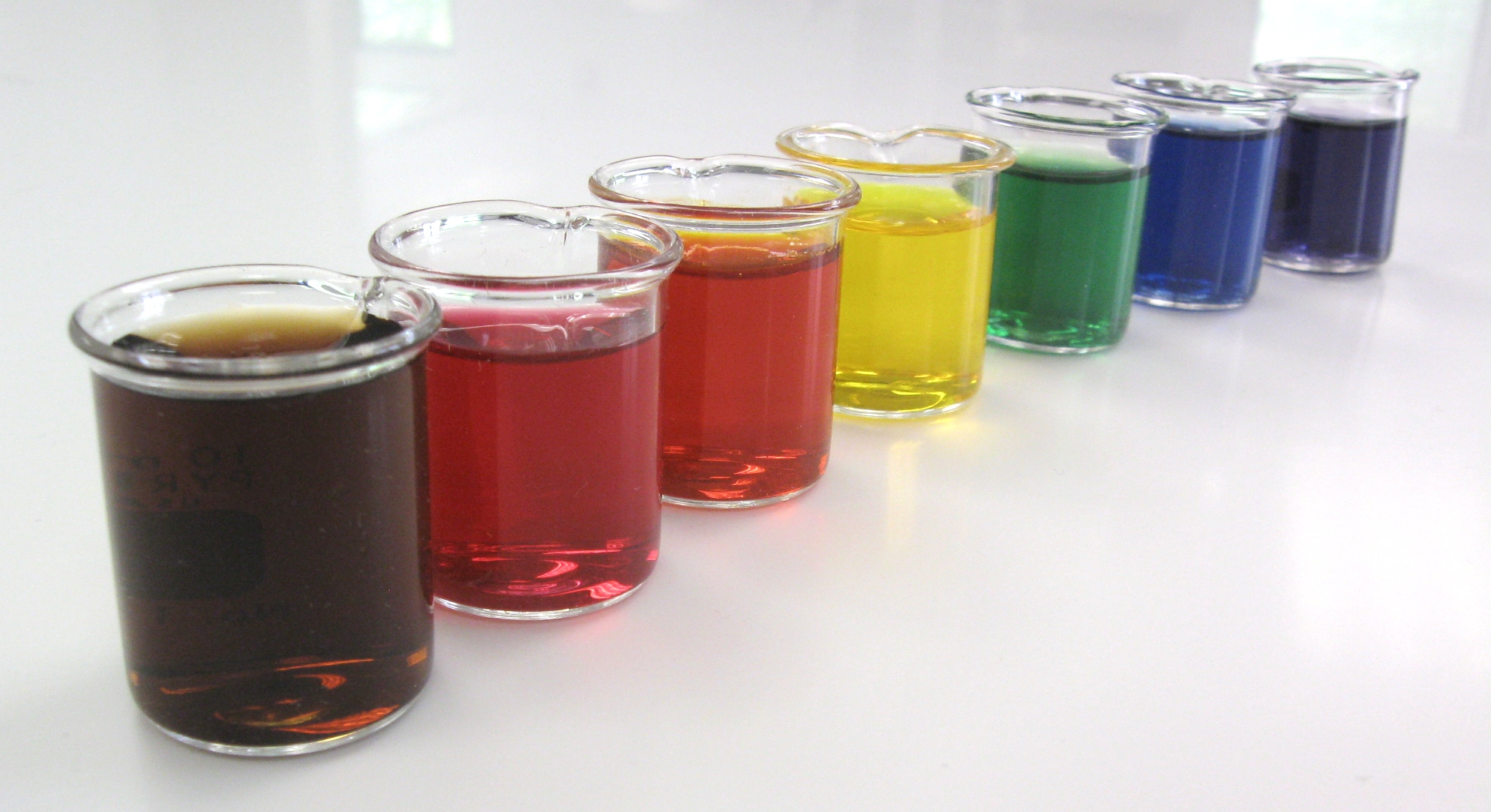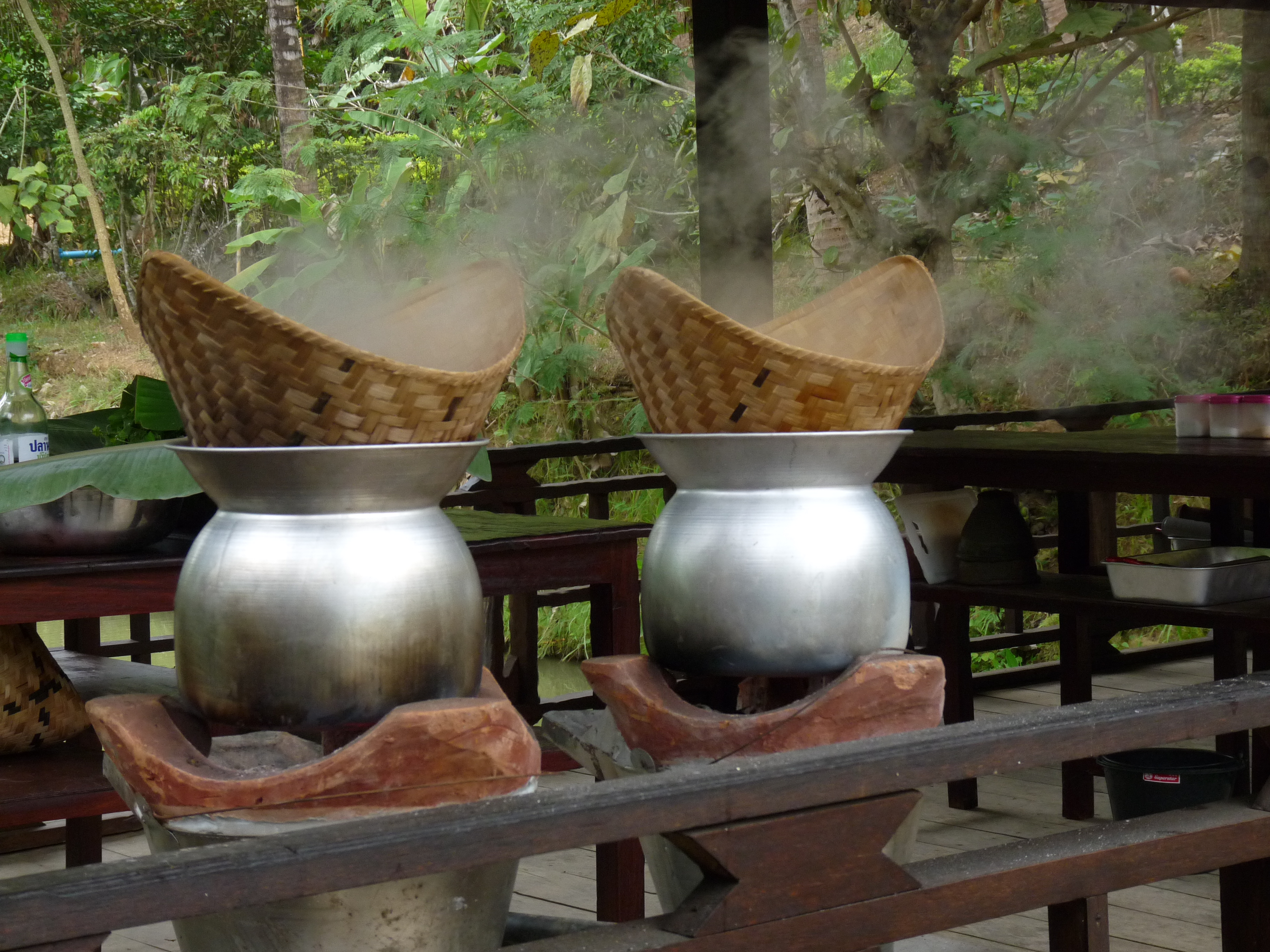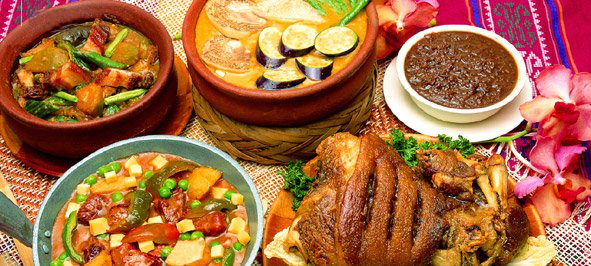|
Cuchinta
''Puto cuchinta'' or ''kutsinta'' is a type of steamed rice cake ('' puto'') found throughout the Philippines. It is made from a mixture of tapioca or rice flour, brown sugar, and lye, enhanced with yellow food coloring or annatto extract, and steamed in small ramekins. It bears resemblance to the Burmese ''mont kywe the'' and Indonesian and Malaysian ''kuih kosui''. The cooked cakes are topped with fresh grated meat from mature coconut.del Mundo, Angelita M. "Emerging Versions of Some Traditional Philippine Rice Food Products." ''Disappearing Foods: Studies in Foods and Dishes at Risk: Proceedings of the Oxford Symposium on Food and Cookery''. 1994 It is consumed year-round as a ''merienda'' or snack, and is frequently sold along with '' puto''. Unlike its counterpart, which has a doughy texture, ''kutsinta'' has a jelly-like, chewy consistency. It may be enhanced by adding ''latik'' for a sweeter taste. See also * Putli mandi * Puto * Puto Calasiao * Philippine cuisine * Li ... [...More Info...] [...Related Items...] OR: [Wikipedia] [Google] [Baidu] |
Putli Mandi
Putli mandi, is a Filipino dessert steamed rice cake originating from the Tausug and Yakan people of Sulu. It is made from glutinous rice dough (although it may also be made with cassava) rolled into balls and filled with sweetened coconut strips ('' hinti''). It traditionally uses ''pulut'' glutinous rice which gives it a natural deep purple color, but it is also commonly dyed in modern versions. It is sprinkled with fresh grated coconut before serving. The name comes from Tausug ''putli'' ("princess") and ''mandi'' ("bath"). Putlimandi is similar to pichi-pichi but differs in that pichi-pichi does not normally have fillings. See also * Cuchinta * Daral * Pichi-pichi Pichi-pichi, also spelled pitsi-pitsi, is a Filipino dessert made from steamed cassava flour balls mixed with sugar and lye. It is also commonly flavored with pandan leaves. It is served rolled in freshly grated coconut, cheese, or latik (coc ... References Philippine desserts Philippine rice d ... [...More Info...] [...Related Items...] OR: [Wikipedia] [Google] [Baidu] |
Kutsinta
''Puto cuchinta'' or ''kutsinta'' is a type of steamed rice cake ('' puto'') found throughout the Philippines. It is made from a mixture of tapioca or rice flour, brown sugar, and lye, enhanced with yellow food coloring or annatto extract, and steamed in small ramekins. It bears resemblance to the Burmese '' mont kywe the'' and Indonesian and Malaysian '' kuih kosui''. The cooked cakes are topped with fresh grated meat from mature coconut The coconut tree (''Cocos nucifera'') is a member of the palm tree family (biology), family (Arecaceae) and the only living species of the genus ''Cocos''. The term "coconut" (or the archaic "cocoanut") can refer to the whole coconut palm, ....del Mundo, Angelita M. "Emerging Versions of Some Traditional Philippine Rice Food Products." ''Disappearing Foods: Studies in Foods and Dishes at Risk: Proceedings of the Oxford Symposium on Food and Cookery''. 1994 It is consumed year-round as a '' merienda'' or snack, and is frequently sol ... [...More Info...] [...Related Items...] OR: [Wikipedia] [Google] [Baidu] |
Food Coloring
Food coloring, color additive or colorant is any dye, pigment, or substance that imparts color when it is added to food or beverages. Colorants can be supplied as liquids, powders, gels, or pastes. Food coloring is commonly used in commercial products and in domestic cooking. Food colorants are also used in various non-food applications, including cosmetics, pharmaceuticals, home craft projects, and medical devices. Some colorings may be natural, such as with carotenoids and anthocyanins extracted from plants or cochineal from insects, or may be synthesized, such as tartrazine yellow. In the manufacturing of foods, beverages and cosmetics, the safety of colorants is under constant scientific review and certification by national regulatory agencies, such as the European Food Safety Authority (EFSA) and US Food and Drug Administration (FDA), and by international reviewers, such as the Joint FAO/WHO Expert Committee on Food Additives. Purpose of food coloring People asso ... [...More Info...] [...Related Items...] OR: [Wikipedia] [Google] [Baidu] |
Steamed Foods
Steaming is a method of cooking using steam. This is often done with a food steamer, a kitchen appliance made specifically to cook food with steam, but food can also be steamed in a wok. In the American Southwest, steam pits used for cooking have been found dating back about 5,000 years. Steaming is considered a healthy cooking technique that can be used for many kinds of foods. Compared to full immersion in boiling water, steaming can be faster and more energy-efficient because it requires less water and takes advantage of the excellent thermodynamic heat transfer properties of steam. History Some of the world's earliest examples of steam cooking were found in China's Yellow River Valley; early steam cookers made of stoneware have been found dating back as far as 5,000 BCE. And also in Gunma Prefecture, Japan, created during the Stone Age. Some of the earliest examples of steam cooking have been found in Italy and Sardinia, created during the Bronze Age, and in Cochise Coun ... [...More Info...] [...Related Items...] OR: [Wikipedia] [Google] [Baidu] |
Foods Containing Coconut
Food is any substance consumed by an organism for nutritional support. Food is usually of plant, animal, or fungal origin and contains essential nutrients such as carbohydrates, fats, proteins, vitamins, or minerals. The substance is ingested by an organism and assimilated by the organism's cells to provide energy, maintain life, or stimulate growth. Different species of animals have different feeding behaviours that satisfy the needs of their metabolisms and have evolved to fill a specific ecological niche within specific geographical contexts. Omnivorous humans are highly adaptable and have adapted to obtaining food in many different ecosystems. Humans generally use cooking to prepare food for consumption. The majority of the food energy required is supplied by the industrial food industry, which produces food through intensive agriculture and distributes it through complex food processing and food distribution systems. This system of conventional agriculture relies he ... [...More Info...] [...Related Items...] OR: [Wikipedia] [Google] [Baidu] |
Philippine Rice Dishes
The Philippines, officially the Republic of the Philippines, is an archipelagic country in Southeast Asia. Located in the western Pacific Ocean, it consists of 7,641 islands, with a total area of roughly 300,000 square kilometers, which are broadly categorized in three main geographical divisions from north to south: Luzon, Visayas, and Mindanao. With a population of over 110 million, it is the world's twelfth-most-populous country. The Philippines is bounded by the South China Sea to the west, the Philippine Sea to the east, and the Celebes Sea to the south. It shares maritime borders with Taiwan to the north, Japan to the northeast, Palau to the east and southeast, Indonesia to the south, Malaysia to the southwest, Vietnam to the west, and China to the northwest. It has diverse ethnicities and a rich culture. Manila is the country's capital, and its most populated city is Quezon City. Both are within Metro Manila. Negritos, the archipelago's earliest inhabitants, ... [...More Info...] [...Related Items...] OR: [Wikipedia] [Google] [Baidu] |
Philippine Desserts
This is a list of Filipino desserts. Filipino cuisine consists of the food, preparation methods and eating customs found in the Philippines. The style of cooking and the food associated with it have evolved over many centuries from its Austronesian origins to a mixed cuisine of Malay, Spanish, Chinese, and American influences adapted to indigenous ingredients and the local palate. "Philippine Cuisine." . Accessed July 2011. Philippine desserts  [...More Info...] [...Related Items...] OR: [Wikipedia] [Google] [Baidu] |
Ang Ku Kueh
''Ang ku kueh'' (; Teochew Peng'im: ''ang⁵ gu¹ guê²''), also known as red tortoise cake, is a small round or oval-shaped Chinese sweet dumpling with soft, sticky glutinous rice flour skin wrapped around a sweet central filling. It is molded to resemble a tortoise shell and is presented resting on a square piece of banana leaf. As suggested by its name, red tortoise cakes are traditionally red in color and has a sticky, chewy texture when eaten. Red tortoise cakes are shaped like tortoise shells because the Chinese traditionally believed that eating tortoises would bring longevity, good fortune and prosperity. Considered to be auspicious items, these sweet pastries are especially prepared during important festivals such as Chinese New Year as offerings to the Chinese deities. Red tortoise cakes are also prepared for occasions that are culturally important to the Chinese such as a newborn baby's first month or birthdays of the elderly. Eating red tortoise cakes during these ... [...More Info...] [...Related Items...] OR: [Wikipedia] [Google] [Baidu] |
List Of Steamed Foods
This is a list of steamed foods and dishes that are typically or commonly prepared by the cooking method of steaming. Steamed foods * Ada – a food item from Kerala, usually made of rice flour with sweet filling inside. * Bánh – in Hanoi Vietnamese, translates loosely as "cake" or "bread", referring to a wide variety of prepared foods. Some varieties are cooked by steaming. ** Bánh bò – a steamed sponge cake ** Bánh bột lọc ** Bánh chuối hấp – literally "steamed banana cake" ** Bánh cuốn ** Bánh da lợn – a steamed layer cake ** Bánh khoai mì hấp ** Bánh tẻ * Chinese steamed eggs – eggs are beaten to a consistency similar to that used for an omelette and then steamed * Corunda * Couscous * Dhokla * Jjim – a Korean cuisine term referring to dishes made by steaming or boiling meat, chicken, fish, or shellfish which have been marinated in a sauce or soup ** Agujjim ** Andong jjimdak ** Galbijjim – a variety of ''jjim'' or K ... [...More Info...] [...Related Items...] OR: [Wikipedia] [Google] [Baidu] |
Philippine Cuisine
Filipino cuisine is composed of the cuisines of more than a hundred distinct Ethnic groups in the Philippines, ethnolinguistic groups found throughout the Philippines, Philippine archipelago. A majority of mainstream Filipino dishes that comprise Filipino cuisine are from the food traditions of various ethnolinguistic groups and tribes of the archipelago, including the Ilocano people, Ilocano, Pangasinan people, Pangasinan, Kapampangan people, Kapampangan, Tagalog people, Tagalog, Bicolano people, Bicolano, Visayan, Chavacano, and Maranao people, Maranao ethnolinguistic groups. The dishes associated with these groups evolved over the centuries from a largely indigenous (largely Austronesian peoples, Austronesian) base shared with maritime Southeast Asia with varied influences from Chinese cuisine, Chinese, Spanish cuisine, Spanish, and American cuisine, American cuisines, in line with the major waves of influence that had enriched the cultures of the archipelago, and adapted us ... [...More Info...] [...Related Items...] OR: [Wikipedia] [Google] [Baidu] |
Puto Calasiao
''Puto Calasiao'' is a type of Filipino soft steamed rice cake; that is well known all over the Philippines for its melt-in-the-mouth feeling. It is a type of '' puto'' (steamed rice cake) shaped in small bite-sized portions. Etymology The name is derived from Tagalog '' puto'' (steamed rice cake) and ''Calasiao'' the place of its origin. Description ''Puto Calasiao'' is a type of ''puto'' (steamed rice cake) that are shaped in small bite-sized portions that is made out from a semi-glutinous rice that is soaked in water, ground and fermented in earthen jars for three days or more, with just enough sugar to taste, and steamed. It can be topped with cheese or drizzled with chocolate syrup for variation. The ''Puto Calasiao'' tradition started dates back from about 1900s, and it originated from the place of Calasiao from the province of Pangasinan where its namesake comes from. It is the town's "white gold" and iconic food. It is known for its sweet, fluffy, chewy, cup-shaped, ... [...More Info...] [...Related Items...] OR: [Wikipedia] [Google] [Baidu] |
Latik
''Latík'' () refers to two different coconut-based ingredients in Filipino cuisine. In the Visayan region it refers to a syrupy caramelized coconut cream (coconut caramel) used as a dessert sauce. In the northern Philippines, it refers to solid by-products of coconut oil production (coconut curds), used as garnishing for a variety of desserts. Visayan ''Latik'' ''Latík'' in its original sense in the Visayan languages literally means 'syrup' (equivalent to ''arnibal'' in Hiligaynon). It can refer to any type of thick sweetened liquids including jam. In the most common usage, however, ''latik'' means a syrupy condiment derived from reducing coconut milk and sugar. It is used much in the same way as syrup, in dishes like ''kalamay'' and '' suman''. It is usually Anglicized as "coconut caramel." A commercial version of the Visayan ''latik'' is marketed internationally as coconut syrup, although it should not be confused with coconut sugar derived from coconut sap. Tagalog ... [...More Info...] [...Related Items...] OR: [Wikipedia] [Google] [Baidu] |






